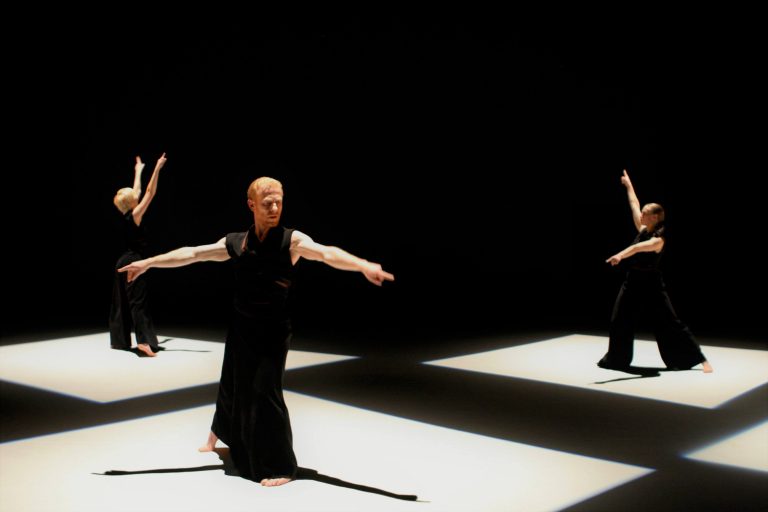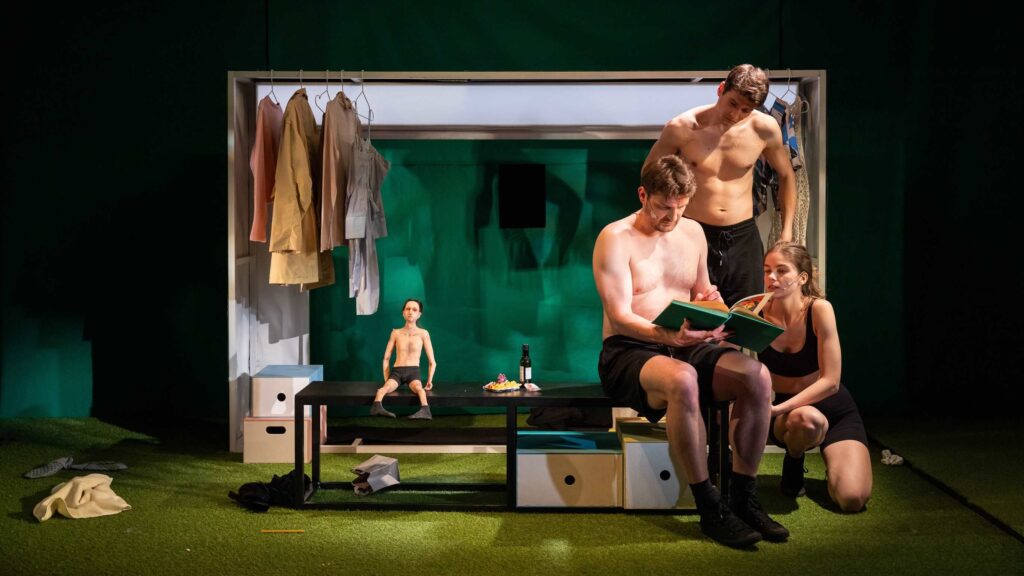
In Lithuania and in the rest of the world, the cultural field explicitly depends on the environment in which it thrives. Therefore, it comes as no surprise that in Lithuania, a country that has entered the maturity of its second period of restored independence, the development of contemporary dance had to cover quite a complex distance at an increased pace. In other words, with its roots extending to the late 20th century, and including ambitious pioneers of dance and the organisers of international festivals, the contemporary dance field in Lithuania has managed to turn into a fully fledged representative of the stage, competitively representing the country abroad, inspiring numerous creators, initiating interdisciplinary projects, and often surpassing the theoretical field. The Lithuanian Dance Information Centre was established in 1995, the Aura Dance Theatre was granted the status of Kaunas City Theatre, and the Contemporary Dance Department at the Lithuanian Academy of Music and Theatre celebrated its 20th anniversary in 2019. Hence, Lithuanian dance has entered the mature stage of its youth, full of power, willingness, ambition and open possibilities.
However, any discussion about today's world without taking into account the reality of the Covid-19 pandemic would be naïve and even inexpedient. Nowadays, when humankind is seeking to survive, adapt and overcome the virus, the field of culture is also looking for new ways to operate, to rethink its existence, and to eventually transform the prevailing paradigm. This is an inevitable course of events for all the arts that are in any way directly associated with audiences, and the Lithuanian dance scene is no exception. We might even regard representatives of contemporary dance in Lithuania as people who paved the way for culture's rules of survival.
If we were to symbolically split time into the periods before and after the pandemic, the first period would be distinguished by the productivity of contemporary dance, both in creative terms and with regard to matching the pulse and the needs of the community. The field of research in practical dance was exceptionally attractive (in terms of both quantity and quality), as creators pursuing their individual creative directions set out to explore specific emotional, social and communal topics. The duo of Agnietė Lisičkinaitė and Greta Grinevičiūtė, originally born as the B&B project, turned into a company called Without Company in 2020. While the duo not only seek their identity in the contemporary world via dance language, Agnietė Lisičkinaitė is also turning into an increasingly potent creator of politically and socially engaged dance, declaring creative manifestos, and weaving the culture of strike and contemporary dance into a seamless creative field. Meanwhile, Greta Grinevičiūtė delves into increasingly articulated dance art, about personal, susceptible emotional experiences, saturated with sentimentality and representing the 'new sincerity' trend. The dance professor Aira Naginevičiūtė has always been distinguished by her quest in dance philosophy, a slow contemplation on the significance of dance, and its relation to oneself and the world. The dancer and choreographer Erika Vizbaraitė, whose creative process is noted for her prolonged creative quest and experimentation with the physical abilities of her own body, might be regarded as a promoter of an original dance technique which one day may even evolve into a school. These characteristics are revealed in her dance performance Apnea, and her dance video productions such as MA 108, produced together with a creative team.
Equally significant is the fact that dance in Lithuania has turned towards socially aware themes, seeking possibilities to include individuals who have never been seen in the creative process on the dance stage. The choreographer and dancer Mantas Stabačinskas began working with disabled people. As well as implementing various projects, he also puts on professional performances (one of them with the director Karolina Žernytė) featuring individuals with mobility disabilities or impaired vision. The need for such socially aware art has been recognised, and won him the Most Memorable Artist of 2020 Award. Stabačinskas' movement laboratory initiative, presented together with Vasara Visockaitė, received the Kaunas Visiems (Kaunas for Everyone) prize.
Also noteworthy are the continuous, creative and searching works by the Kaunas dance theatre Aura, the Vilnius city theatre Low Air, the Klaipėda-based Šeiko dance theatre, the public company Airos, Vytis Jankauskas' dance theatre, and other artists. Prior to the pandemic, significant attention was paid to working with and in the regions (the Šeiko dance theatre being the most active in this field), and the Contemporary Dance Association organised residencies throughout Lithuania.
It should be noted that international experience reaches Lithuania not only through the festivals in the three main Lithuanian cities, New Baltic Dance in Vilnius, the International Aura Dance Festival in Kaunas, and Plartforma in Klaipėda. An increasing number of artists gain experience and training abroad, working actively in several countries simultaneously. These global dance artists include Vilma Pitrinaitė, who symbolically began the quest for a Lithuanian identity via the language of dance and performance, and keeps doing so, to create an increasingly liberating but also very subtle field in the search for the identity of the global citizen. Austėja Vilkaitytė, an artist living between Sweden and Lithuania, provocatively and accurately questions the identity of a woman artist, delving deeper into and expanding the field of interdisciplinary art. Meanwhile, Sakaruko, the founder of the Okarukas dance theatre, spreads the freshness of Eastern aesthetics under the skies of contemporary Lithuanian dance.
When the Covid pandemic struck Lithuania a year ago, access to culture gradually narrowed, until all cultural organisations were quietly closed down. During this period, the creators of dance have demonstrated cohesion, along with a strong communal spirit and a desire to create and maintain contact with viewers. There was a wave of initiatives featuring individual dance performances from home, along with the Dance Breakfast project, which served as a wake-up call for numerous admirers. The New Baltic Dance festival went on air on national television, while the dance video format (dance performances and films) became a distinct subject of discussion in the cultural field. The Lithuanian Dance Information Centre, the Contemporary Dance Association, the Lithuanian Choreographers' Association, and other organisations and individual artists, not only sought possibilities to present dance on television and computer screens, but also to show the various attractions of dance, and to contribute to the associated theoretical discourse. Short videos are made on the history of dance, lessons are held for teachers and pupils, ways are sought to dance and to speak about and discuss dance professionally, and to initiate and provide a space for theoreticians to express themselves in the context of contemporary dance.
Therefore, it comes as no surprise to find that the situation in Lithuanian contemporary dance is tense, as it is for the entire cultural field, here and abroad. Artists are seeking ways to survive, while at the same time remaining relevant, interesting, attractive, and most importantly, creative. It is great that artists are not only moving directly to new online platforms, but also delving into genres that have not seen active creative development in Lithuania, such as an original dance video format offering a variety of possibilities. They are seeking theoretical approaches towards people who may never have had direct exposure to contemporary dance. More attention is being paid to smaller towns in the regions, and not only to large cities. All these purposeful activities reinforce the dance-related theoretical field, provoke discussion, and encourage educational initiatives. However, it is a tense period of survival, and it is hard to predict what the world, and specifically the contemporary dance world in Lithuania, will be like after the Covid-19 pandemic is over. We can only hope that the creative resolution of threatening and destructive situations will inspire, rather than subvert, the artists.















